Editors Consider New Format to Replace Local Columns
Marilynn Bailey Dies, Knew What Her Mission Was
Al Jazeera Journalist Killed in Israeli Air Strike
Medill Faculty Helps Inmates Earn College Degrees
Members of News Leaders Group Vote to Dissolve
$500,000 Grant to Serve Communities of Color
‘Watchdog’ Editor Rochester to Lead Fla. Newsroom
Black Media as ‘One Big Cookout’
MSNBC Attracts Most Diverse Cable Audience
Cuba Said to Use U.S. Media to Tarnish Candidates
Short Takes: Ava DuVernay and Isabel Wilkerson; new talks to sell BET; paucity of Asian characters in leading roles; CCNMA: Latino Journalists of California and USC; Soledad O’Brien and “the End of Affirmative Action”; David Ono; Carlos Watson vs. Ben Smith; Joe Madison; Kaity Tong; N.Y. police reporters’ legendary “Shack”; transforming crime reporting; abusive prison guards going free; GBH News race and equity unit; Ted Cruz vs. diversity requirements; Women’s Media Center and news leaders of color; AAJA wants experiences of journalists of color; Brian Bull; Tommy Cummings; growth in “journalism of the displaced.”
Homepage photo: Washington Post Guild announces tentative settlement
Updated Dec. 28, Jan. 4, Jan. 5]
Support Journal-isms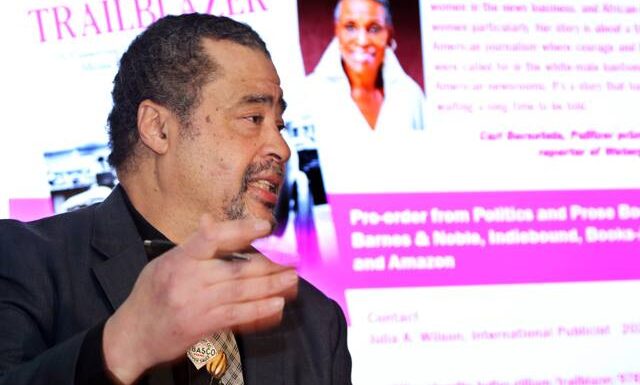
Editors Consider New Format to Replace Local Columns
The Washington Post and the Post’s News Guild unit announced Friday they had reached a tentative contract settlement. That news came after longtime Black Post journalists Courtland Milloy, Vanessa Williams, Sydney Trent, Ovetta Wiggins and Darryl D. Fears said they were leaving the newspaper as it sought — and reached — its headcount reduction goal through voluntary buyouts.
Readers will feel the loss of all of those exiting, but the departure of Metro columnists Milloy and John Kelly leaves a particular hole in local news, coverage that Executive Editor Sally Buzbee told Journal-isms that the Post is “committed to maintaining,” though perhaps through a different format.
“We are immensely grateful to Courtland Milloy and John Kelly for their work chronicling this community, its changes and its challenges through the years. Their reporting helped create an ongoing dialogue with our readers that we are committed to maintaining, whether through columns or other formats that deepen our engagement with the Washington region,” Buzbee said Thursday.
Remaining are local columnists Theresa Vargas and Petula Dvorak. Asked whether that means they will continue, spokesperson Kathy Baird said Thursday, “We don’t have any other changes to announce at this time.”
The Post Guild’s tentative contract agreement comes “after a year and a half of protracted and, at times, contentious talks that spilled into public view,” Liam Reilly reported for CNN.
“The new contract, the union said, guarantees employees’ essential rights, secures raises across the board, and nearly doubles salary floors for the lowest-paid employees at The Washington Post. . . .”
A study by the Guild last year found that “women and people of color are still paid less compared with their male and White colleagues.”
Raising pay minimums would be a boost for people of color, the Guild argued.
 Each of those departing brought something unique. Fears (pictured) is one of few environmental journalists of color, as he pointed out in a 2020 interview with Shayna Greene at George Washington University: “I don’t want to disparage all white environmentalists or conservationists or white journalists. It’s just, they have serious blind spots and they don’t see everything and they don’t write with urgency about some of the things that people of color care about,” Fears said then.
Each of those departing brought something unique. Fears (pictured) is one of few environmental journalists of color, as he pointed out in a 2020 interview with Shayna Greene at George Washington University: “I don’t want to disparage all white environmentalists or conservationists or white journalists. It’s just, they have serious blind spots and they don’t see everything and they don’t write with urgency about some of the things that people of color care about,” Fears said then.
Wiggins covered Maryland state politics. “This hurts. Local/state reporting lost another gem,” wrote one admirer on X, formerly Twitter. “A big loss for Maryland voters,” wrote another. “Thanks for your thoughtful, thorough and fair reporting. Wish we had many more like you!”
Wiggins told Journal-isms Saturday, “I hope that I’m remembered for informing and enlightening readers and telling the stories that might not otherwise have found their way into the pages of The Post. In the newsroom, to be remembered as a trusted and generous colleague.”
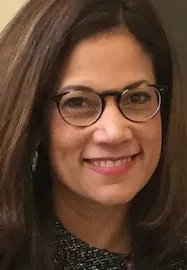 Trent (pictured) had been an innovative Post editor or reporter since 1999. “I plan to begin work on a book project after getting in some eagerly-awaited R&R. Then we’ll see what’s next. No plans to retire just yet,” she messaged Journal-isms on Saturday.
Trent (pictured) had been an innovative Post editor or reporter since 1999. “I plan to begin work on a book project after getting in some eagerly-awaited R&R. Then we’ll see what’s next. No plans to retire just yet,” she messaged Journal-isms on Saturday.
“Highlights over 24 years: co-leading the Post Magazine during a time when it won two Pulitzers; editing an investigative series that won a Polk and other awards; earning my bonafides as one of the Post’s best narrative editors; Orchestrating and editing coverage for the 2015 papal visit in three cities; creating the popular Inspired Life blog and giving historical and present day Black people their turn in the sun as a writer at the end of my tenure.”
With a mere 16 years at the Post, David Betancourt wasn’t as senior as some of these other journalists, but as staff writer for the Style section and the Comic Riffs blog, and as daily comics editor, he had his own niche. Earlier this year, Betancour published his first book, “The Avengers Assembled: The Origin Story of Earth’s Mightiest Heroes.”
In promoting the book, Betancourt explained how his perspective as an Afro-Latino informed writing for Afro-Latina superhero Billie Morales. (video)
Paulina Villegas, a Hispanic staff writer on the general assignment desk, where she covers national and breaking news, announced on X that she planned “to pursue other opportunities. It has been an honor to work at a news organization that believes in journalistic excellence as much as it does in diversity and equal opportunity,” she said.
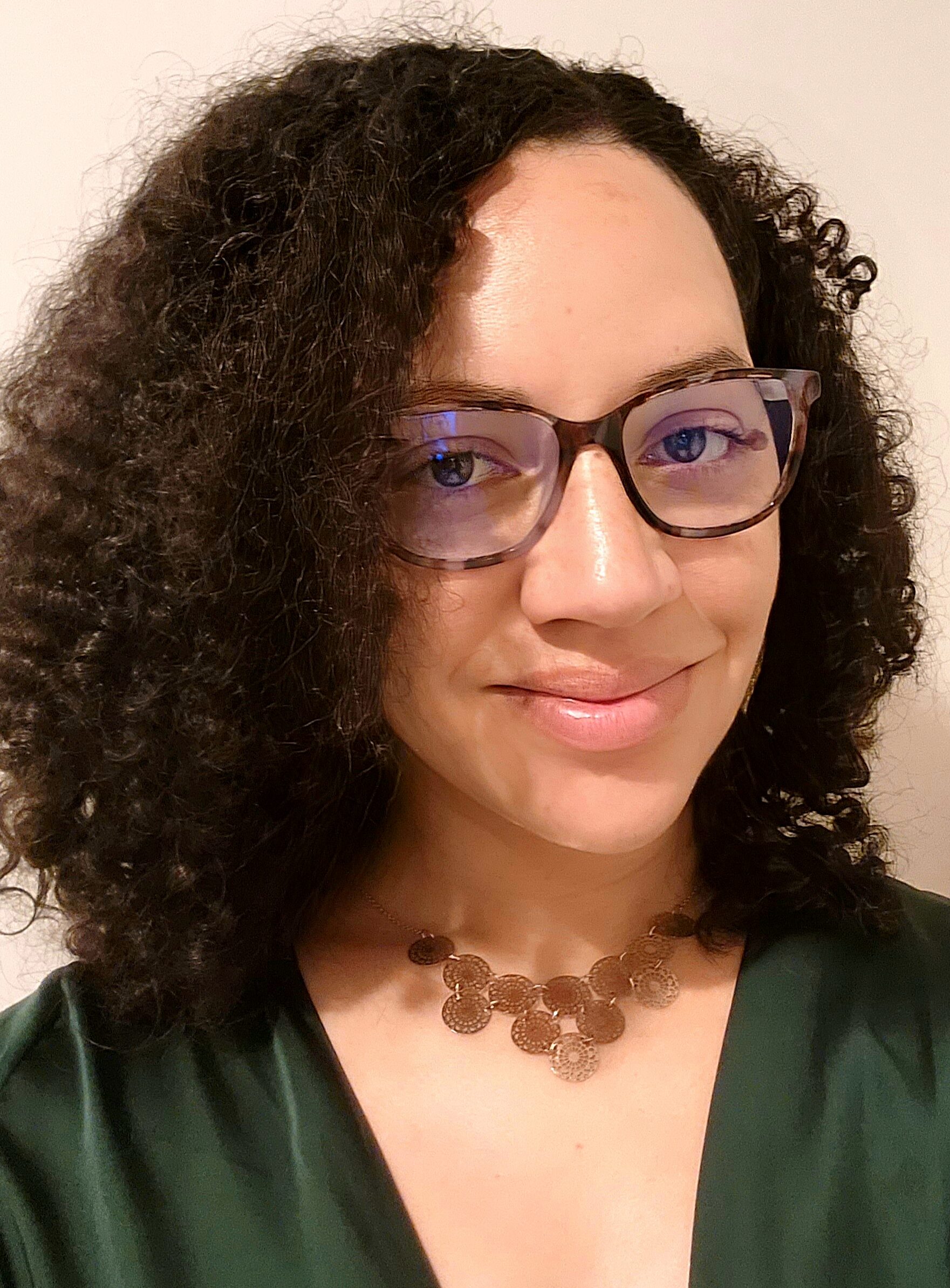 [Dec. 28 update: Shannon Croom (pictured), a Hampton University graduate and a three-time Dow Jones News Fund intern who in 2010 became the first intern on the Post’s Multiplatform Desk, confirmed Dec. 28 that she also is taking the buyout.
[Dec. 28 update: Shannon Croom (pictured), a Hampton University graduate and a three-time Dow Jones News Fund intern who in 2010 became the first intern on the Post’s Multiplatform Desk, confirmed Dec. 28 that she also is taking the buyout.
[Editors said in their announcement, “Shannon has always had a clear vision of what work and life outside work should look like, nurturing both without being consumed by either. She has also had an unwavering commitment to diversity and to speaking truth about all matters — especially where The Post’s historical lack of diversity leaves us open to making errors and ignorant assumptions about people of color, women or gender identity. Shannon has saved us from these types of miscues many times over the years while also helping colleagues broaden their worldviews, even though that’s not her responsibility. We’re a better news organization because Shannon spent almost half her life with us, and we will miss her both personally and institutionally.
[“Shannon’s standout editing includes her work on the Black sperm donors series in 2022; a pair of stories this year about Black women who have had traumatic birthing experiences; and Helena Andrews-Dyer and Krissah Thompson’s Black motherhood project in 2019. Shannon played a crucial role in ensuring the on-time launch of By the Way and its many city guides and has worked across the newsroom on multidepartment projects such as ‘The Afghanistan Papers.’ . . . .”]
Milloy is leaving after 48 years at the Post, the last 40 as a columnist. His is one of the nation’s longest-running local columns. “I’m not retiring, just moving on, ” Milloy told readers Tuesday. “Maybe your eyeballs will cross paths with my written words in another place at another time. I hope so.” Milloy has been writing on contract with the Post since 2006, after he accepted a previous buyout offer.
In 2001, then-ombudsman Michael Getler wrote, “Milloy’s column is one of the things I like best about the newspaper. He writes a reportorial-style column. He goes to places and talks to people and writes down what they say and do and why they do it. He writes mostly about black people. But they could be white or Hispanic.
“What is important is their humanity and dignity. He takes us to places and people that many of us don’t get to, and he often finds things there that are restorative. He reminds us, through reporting, that at a time when we are surrounded by so much ugliness — an out-of-control gun culture, rampant violence on television and in movies — many people are out there who are not headline-makers but who do things that make us less despairing about where we are headed.” [Milloy even wrote about this column.].
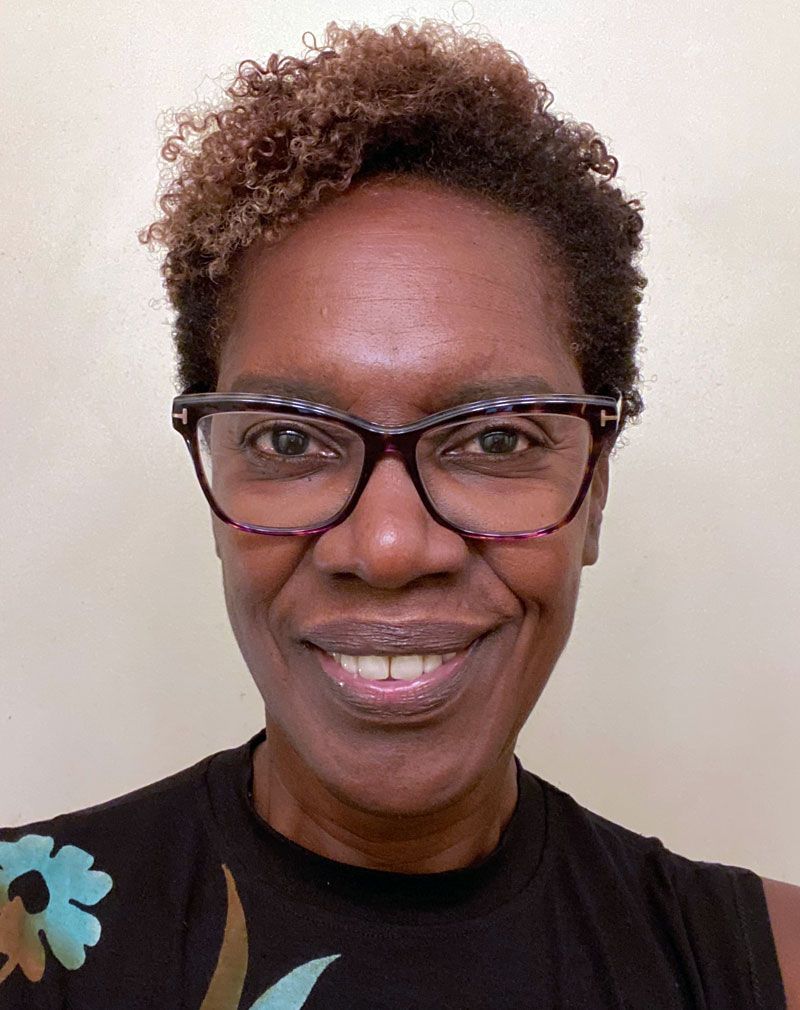 A note from Post editors called Williams (pictured) “an accomplished journalist and cherished colleague who has been a fierce advocate for diversity in our coverage and on our staff” ‘ who has decided to leave The Post after a 27-year career here.
A note from Post editors called Williams (pictured) “an accomplished journalist and cherished colleague who has been a fierce advocate for diversity in our coverage and on our staff” ‘ who has decided to leave The Post after a 27-year career here.
“Vanessa has held numerous writing and editing roles across the newsroom, most recently as a deputy National politics editor steering coverage of voters and the changing American electorate. She has guided illuminating reports about the country’s shifting political terrain and the issues and candidates that animate disparate groups of voters.
“Vanessa has helped surface important stories about Black voters in particular, chronicling the Democratic Party’s most loyal constituency and the ways President Biden and his party work to galvanize their support, as well as the Republican Party’s efforts to recruit Black candidates and appeal to voters of color. . . .”
The editors added, “Vanessa has long been committed to elevating the voices of disenfranchised Americans and to advocating for those from diverse backgrounds within our newsroom. She has been a mentor to countless young journalists, helping them hone their skills, shaping their careers and guiding them on navigating newsroom culture, noting, “She is a former president and board member of the National Association of Black Journalists.”
In offering its own congratulations, the new NABJ-Philadelphia chapter of the national organization noted that Williams was president of the Philadelphia Association of Black Journalists for two terms in the late 1980s and early 1990s, when she worked at the Philadelphia Inquirer. She was NABJ president from 1997 to 1999.
Asked what she’d like to do next, Williams messaged Journal-isms, “Gonna take some time to rest, reflect and refresh. And then figure out the best way to continue the work.”
 Among others leaving the Post is Alma Martin Gill (pictured), who worked for the National News and Politics editor, and, separately, writes an advice column, “Ask Alma,” for the National Newspaper Publishers Association, trade organization for the Black press.
Among others leaving the Post is Alma Martin Gill (pictured), who worked for the National News and Politics editor, and, separately, writes an advice column, “Ask Alma,” for the National Newspaper Publishers Association, trade organization for the Black press.
 [Added Jan. 4: Transportation reporter Luz Lazo (pictured) also took the buyout. “I am exploring options in journalism and outside of journalism. It’s a tough market for journalists so I am open to changing careers if the right opportunity arrives,” she told Journal-isms.]
[Added Jan. 4: Transportation reporter Luz Lazo (pictured) also took the buyout. “I am exploring options in journalism and outside of journalism. It’s a tough market for journalists so I am open to changing careers if the right opportunity arrives,” she told Journal-isms.]
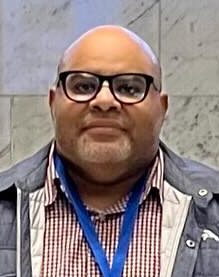 [Added Jan 5: Justin George (pictured), who covered transit, posted Jan. 2 on Facebook: “Last week I left the Washington Post after nearly 4.5 years covering transit. Why would I leave my dream workplace? To go home. I spent my first 23 years in Colorado, and my last 23 outside of it. It was time — something I’ve wanted badly since the pandemic. A serious health scare the last few months only underlined my desire to be near family. It was a difficult decision to take a buyout but I didn’t see a path where I could have both anytime soon. I was tired of waiting. So I chose Denver.
[Added Jan 5: Justin George (pictured), who covered transit, posted Jan. 2 on Facebook: “Last week I left the Washington Post after nearly 4.5 years covering transit. Why would I leave my dream workplace? To go home. I spent my first 23 years in Colorado, and my last 23 outside of it. It was time — something I’ve wanted badly since the pandemic. A serious health scare the last few months only underlined my desire to be near family. It was a difficult decision to take a buyout but I didn’t see a path where I could have both anytime soon. I was tired of waiting. So I chose Denver.
[“What will I do next? I have no plans to leave journalism & will be looking for opportunities to get back to telling stories, writing more about people & helping younger journalists pursue their dreams the way many helped me. If you know of any remote-based opportunities, I’d be grateful if you send them my way.”]
The Post’s cost-cutting “came in the wake of a brutal financial year for the paper and ahead of the official start of a new CEO,” Kerry Flynn and Eleanor Hawkins reported Tuesday for Axios.
“Flashback: In October, the Post announced its plan to eliminate 240 jobs through voluntary separation packages. The company already had cut 20 positions, axing its gaming vertical and kids section, back in January.
“Earlier this month, about 750 Post staffers participated in a 24-hour strike after the paper’s management and The Post Guild failed to agree on a contract after 18 months of negotiations.”
Asked how the downsizing would affect newsroom diversity, Post spokesperson Baird indicated that interested parties would have to wait and see.
“On the diversity front we do publish our workforce demographics here , which we update annually,” she said.
On Facebook Friday, Fears said he had no regrets about not being one of those in the next count. “After I signed the [voluntary separation package] a week ago today, the sun rose and the sky was a brilliant blue. During the weeklong grace period that allowed me to change my mind, I felt a weight lifting and a feeling that gravity was giving way. Close friends and colleagues who also asked for eligibility before accepting said they felt it too.”
- AP News Guild: After more than 19 months of bargaining, the @APNewsGuild has reached an agreement with @AP on a three-year deal. (Dec. 24)
- Rend Smith, Washington City Paper: What’s Tweeting Courtland Milloy? (Nov. 26, 2010)
Marilynn Bailey Dies, Knew What Her Mission Was
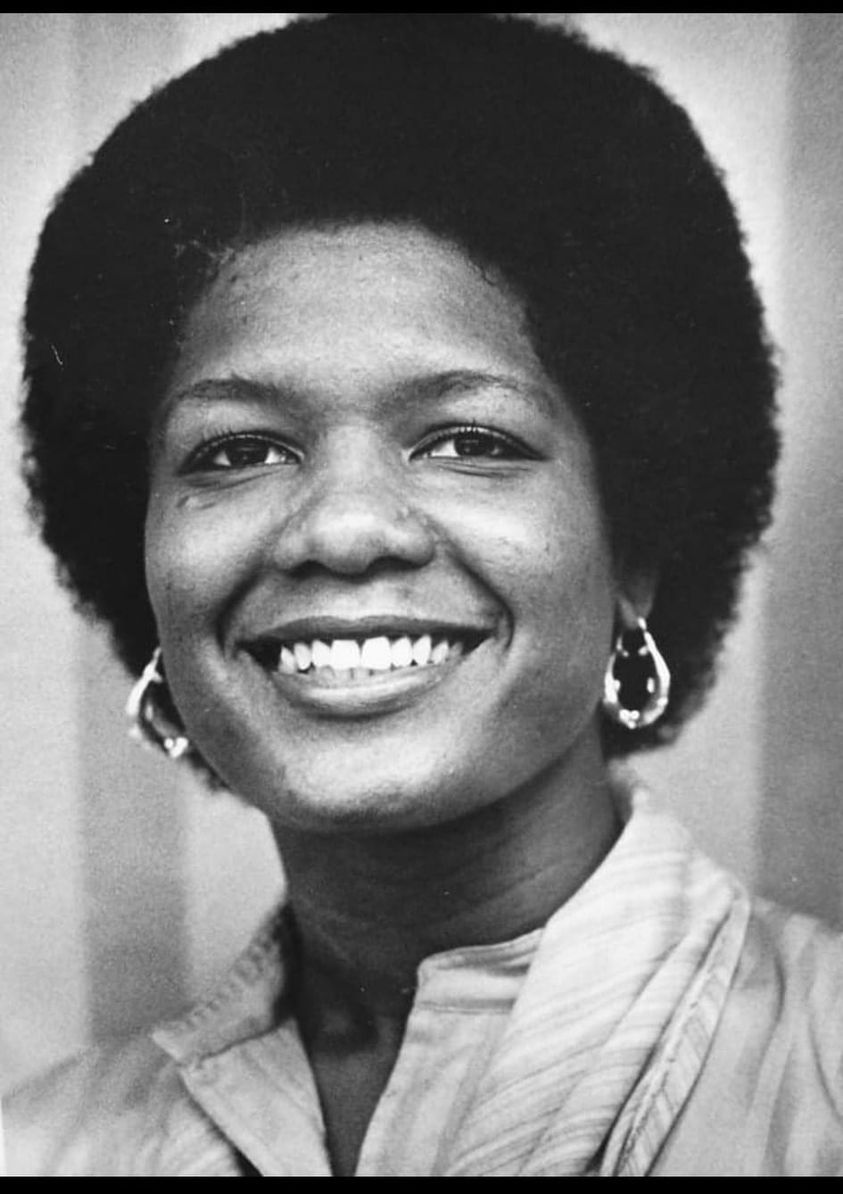 Marilynn Bailey (pictured), an “eternally upbeat and optimistic” journalist who counted the legendary Bob Maynard as a mentor, served on the board of the National Association of Black Journalists and became managing editor of the Gannett-owned Virgin Island Daily News, died Dec. 15 in Mesa, Ariz., where she was being cared for after a stroke, family members and friends said. She was 76.
Marilynn Bailey (pictured), an “eternally upbeat and optimistic” journalist who counted the legendary Bob Maynard as a mentor, served on the board of the National Association of Black Journalists and became managing editor of the Gannett-owned Virgin Island Daily News, died Dec. 15 in Mesa, Ariz., where she was being cared for after a stroke, family members and friends said. She was 76.
Bailey once messaged Journal-isms that, like many of her generation, “I, too, got into the business to give ‘the voiceless’ a voice. My motivation, even when editors were giving me hell, NEVER dimmed. I knew who I was and why I was there!!!
“. . . . It was an junior high school teacher who lit the light for me … when she told me I was a good writer.
I was off and running! Junior high, senior high, and university school newspapers.”
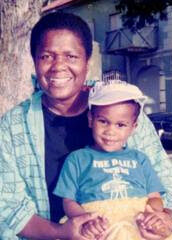 Veteran broadcaster Barbara Rodgers recalled: “It was Marilynn (pictured with daughter, Favinn, in 1989) who called a group of us Bay Area Black journalists together one Sunday morning in 1981 to tell us that she wanted to form a chapter of the NABJ. So BABJA was conceived in her living room and was officially incorporated as an NABJ Chapter the next year in 1982.”
Veteran broadcaster Barbara Rodgers recalled: “It was Marilynn (pictured with daughter, Favinn, in 1989) who called a group of us Bay Area Black journalists together one Sunday morning in 1981 to tell us that she wanted to form a chapter of the NABJ. So BABJA was conceived in her living room and was officially incorporated as an NABJ Chapter the next year in 1982.”
As for Maynard, the former publisher of the Oakland Tribune, news industry leader and namesake of the Robert C. Maynard Institute for Journalism Education, Bailey said, ” We met in Chicago at an NABJ conference … I sat in on an editorial writing session. Had no intention of ever being an editorial writing … just wanted to hear what the icon Bob Maynard had to say.
“We became fast friends and he was not only my mentor in the biz, but I could talk to him about anything. He often confided in me about stuff, too. . . .”
A memorial service is planned for 10:30 a.m. on Jan. 20, at the Jesus Christ Church of Latter Day Saints, 19730 E. Ocotillo Rd. Queen Creek, AZ 85142, the Virgin Islands Daily News reported.
More in the Virgin Islands Daily News.
- Lawrence Aaron, Virgin Islands Daily News: Marilynn Bailey was a gem
“The Mehdi Hasan Show” tweeted Sunday on X: “In tonight’s final edition of the #handover, @MehdiRHasan and @AymanM remember Al Jazeera journalist, Samer Abu Daqqa, who was killed in Gaza this week. @AymanM: “He was truly a remarkable guy and an amazing friend.” (video)
Al Jazeera Journalist Killed in Israeli Air Strike
Al Jazeera Arabic journalist Samer Abudaqa has been killed and his colleague Wael Dahdouh was wounded in an Israeli attack in Khan Younis, southern Gaza, Al Jazeera reported Dec. 15.
“Cameraman Abudaqa and correspondent Dahdouh were reporting at Farhana school in Khan Younis when they were hit . . .
“Rescue teams were unable to immediately reach Abudaqa and others at the site due to Israeli bombardment,” leaving him to bleed to death for hours, NPR added, quoting Al Jazeera.
“Rescuers just managed to retrieve the cameraman Samer Abudaqa’s body,” a spokesperson for the media network said.
The Committee to Protect Journalists said Thursday, “As of December 21, 2023, CPJ’s preliminary investigations showed at least 68 journalists and media workers were among the more than 20,000 killed since the war began on October 7 — with more than 19,000 Palestinian deaths in Gaza and the West Bank and 1,200 deaths in Israel.” The group said the war has led to the deadliest period for journalists since CPJ began gathering data in 1992.
On NPR and on MSNBC’s “Medhi Hasan Show,” Abudaqa’s former colleague and MSNBC host Ayman Mohyeldin discussed his slain friend. “He was a very dedicated cameraman, somebody who loved his job. He was, as we say, a journalist’s journalist, somebody who loves to shoot and film and then would come back and tell you the best pictures that he captured. He knew Gaza extremely well.
“He was a very funny, very witty but also a very serious cameraman who took his job with a tremendous amount of professionalism. . . .” Mohyeldin told NPR’s Ayesha Rascoe.
Abudaqa’s colleague Dahdouh was hit by shrapnel on his upper arm, and managed to reach Nasser hospital where he was treated for minor injuries.
Separately, Democratic Sens. Cory Booker of New Jersey, Brian Schatz of Hawaii, Chris Van Hollen of Maryland, Peter Welch of Vermont and Tim Kaine of Virginia called on President Biden Dec. 15 to urge the governments of Israel and Egypt to allow journalists into Gaza to cover the war and protect press freedom.
“They also condemned Hamas’s use of propaganda and harassment, obstruction, and use of physical violence against journalists in Gaza. In their letter to the president, the senators underscored the importance of safe access into Gaza for journalists and the need for accurate and independent reporting from inside the warzone. . . .”
Meanwhile, according to a poll earlier this month from The Associated Press-NORC Center for Public Affairs Research, Black adults were more likely than white and Hispanic adults to say the U.S. is too supportive of Israel — 44% compared to 30% and 28%, respectively. However, Black Americans weren’t any more likely than others to say the U.S. is not supportive enough of the Palestinians, the Associated Press reported.
In addition, a late October survey of Black American attitudes on the Israel-Hamas war, previewed Nov. 19 at the Journal-isms Roundtable by author Christopher Shell, was officially released Dec. 13.
The “October 20–25 survey found that 43 percent of Black Americans supported some form of ceasefire in Gaza, while 24 percent believed the United States should not be involved in the Israeli-Palestinian conflict,” the Carnegie Endowment for International Peace said.
- Marina Adami, Reuters Institute: Breaks, grief and community: how to protect yourself when sifting through graphic visuals from Gaza and beyond (Nov. 17)
- Karen Attiah, Washington Post: Where is the outrage over Israel’s killing of journalists in Gaza?
- Perry Bacon Jr., Washington Post: Biden’s Gaza policy is the latest major U.S. foreign affairs blunder (Dec. 13)
- Isaac Chotiner, New Yorker: The War in Gaza Has Been Deadly for Journalists
- Amy Goodman with Maya Gebeily, “Democracy, Now!”: Israel Accused of War Crimes for “Apparently Deliberate” Killing of Reuters Journalist in Lebanon (Dec. 14)
- Michel Martin, NPR: Number of journalists killed in Gaza since Oct. 7 attacks called unprecedented loss
- Reporters Without Borders: RSF files second complaint with ICC for war crimes against journalists in Gaza since 7 October
Medill Faculty Helps Inmates Earn College Degrees
“The men in Northwestern University’s Prison Education Program have been called many things — mostly inmates. But these residents of a maximum security state prison in Illinois have been adding new titles: student, scholar, author, and now, college graduate,” John Yang reported Dec. 16 for “PBS News Weekend.” Yang was introducing a report from Brandis Friedman of WTTW Chicago. She told viewers that last month the men became the first class of incarcerated graduates from Northwestern University’s Prison Education Program, and that more are on the way.
Four faculty members from the Medill School of Journalism, Media, Integrated Marketing Communications teach in thee program, though the students do not receive a Medill degree, Dean Charles F. Whitaker told Journal-isms. “(Theirs is a degree in ‘general studies/liberal arts’.) We are looking for a way to clear a path for NPEP alums to enroll in our graduate program upon release. It’s a complex issue, however, and we haven’t quite figured out how it might work.”
- Sam Levin, the Guardian: ‘I get to tell my story’: incarcerated journalists are making podcasts, going viral and winning awards
Members of News Leaders Group Vote to Dissolve
Members of the News Leaders Association, the leading journalism organization for news editors and whose predecessor group for more than four decades monitored diversity progress at newspapers through its annual survey, have voted to dissolve, the association announced Dec. 11.
“We are thrilled to announce that the Joseph L. Brechner Freedom of Information Project at the University of Florida is now officially in charge of Sunshine Week,” which celebrates the First Amendment, “continuing this decades’ old tradition for the foreseeable future,” NLA said in a statement. During an electronic membership meeting in November, 84 percent of the NLA members who participated voted to follow the board’s recommendations and dissolve NLA by June 30, 2024, the group said.
“The NLA Awards program has now been transferred to the prestigious Poynter Institute, as part of NLA’s winding down of programs as we proceed with dissolution. For more information on the Poynter Journalism Prizes, click here.
“All other NLA assets, including the diversity survey, leadership training programs, and historical records of NLA (formed in 2019 in a merger of ASNE, the American Society of News Editors, and APME, the Associated Press Media Editors) will be transferred to other non-profit journalism organizations in 2024 as we finalize work to secure a home for these important programs.”
“We are still working on placing the diversity survey,” NLA President Alison Gerber, editor of the Chattanooga (Tenn.) Times Free Press, reiterated Dec. 11 in response to a question from Journal-isms.
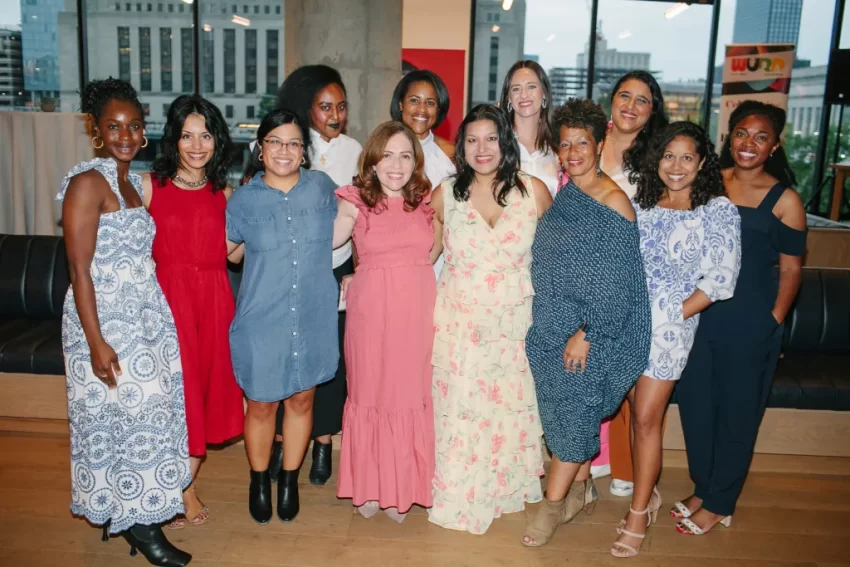
$500,000 Grant to Serve Communities of Color
“URL Media, a network of media organizations that serve, support and center communities of color and whose leadership and teams represent these populations, secured a one-year $500,000 grant from the John D. and Catherine T. MacArthur Foundation to provide URL the resources to expand its editorial capacity and support the formation of URL’s non-profit arm, URL Collective,” the company announced Monday.
” ‘We are excited to be one of MacArthur’s grantees at this critically important time,’ Sara M. Lomax, co-founder and president of URL Media and president and CEO of WURD Radio, said. ‘URL’s network of more than 25 Black and Brown newsrooms will be pivotal in informing and engaging our communities while addressing misinformation and disinformation in the upcoming presidential election. . . .
“URL Media has grown from its inaugural 8 media partners to now over 25 – a group of influential media organizations that include Black Girl Times, Black Voice News, Epicenter-NYC, Immigrantly Podcast, La Noticia, Native News Online, Our Body Politic, palabra., Pulso, Prism, PushBlack, Sahan Journal, Scalawag, Scroll Stack, TBN24, The Haitian Times, The Oklahoma Eagle, Watch the Yard, and WURD Radio.
“ ‘This grant is a recognition of our collective success,’ said S. Mitra Kalita, co-founder and CEO of URL Media . . . .”
‘Watchdog’ Editor Rochester to Lead Fla. Newsroom
Investigative journalist Mark J. Rochester has been named executive editor of the Sarasota (Fla.) Herald-Tribune, “with a focus on watchdog journalism,” Derek Gilliam reported Dec. 12 for the Gannett newspaper.
 Rochester (pictured), who starts Jan. 2, will be one of the few leaders of mainstream newspapers with such a background in investigative journalism. He has held editor positions at the Indianapolis Star, Newsday, Denver Post, Associated Press, Pittsburgh Post-Gazette and Detroit Free Press. He also has served as vice president of Investigative Reporters & Editors Inc.
Rochester (pictured), who starts Jan. 2, will be one of the few leaders of mainstream newspapers with such a background in investigative journalism. He has held editor positions at the Indianapolis Star, Newsday, Denver Post, Associated Press, Pittsburgh Post-Gazette and Detroit Free Press. He also has served as vice president of Investigative Reporters & Editors Inc.
Rochester most recently was managing editor for California-based nonprofit inewsource, where he managed a team of reporters and editors in San Diego.
Rochester told the Herald-Tribune newsroom “that he plans to focus the newsroom’s resources on watchdog reporting, which he called accountability journalism, while highlighting past examples of his newsroom projects’ community impact,” Gilliam wrote.
” ‘Thousands of people count on us to learn about the world, help them make better decisions, get involved in their community, and enjoy the rich culture and resources Southwest Florida offers,’ Rochester said. ‘This is an amazing opportunity we have here at the Herald-Tribune to positively impact the region by doing high-impact journalism and storytelling for our community.’ “
In 2020, Gannett, owner of USA Today and more than 260 local news operations, announced a broad initiative to make its workforce as diverse as the country by 2025.
- Investigative Reporters & Editors: Three women receive IRE’s 2024 Chauncey Bailey Journalist of Color Investigative Reporting Fellowship
Black Media as ‘One Big Cookout’
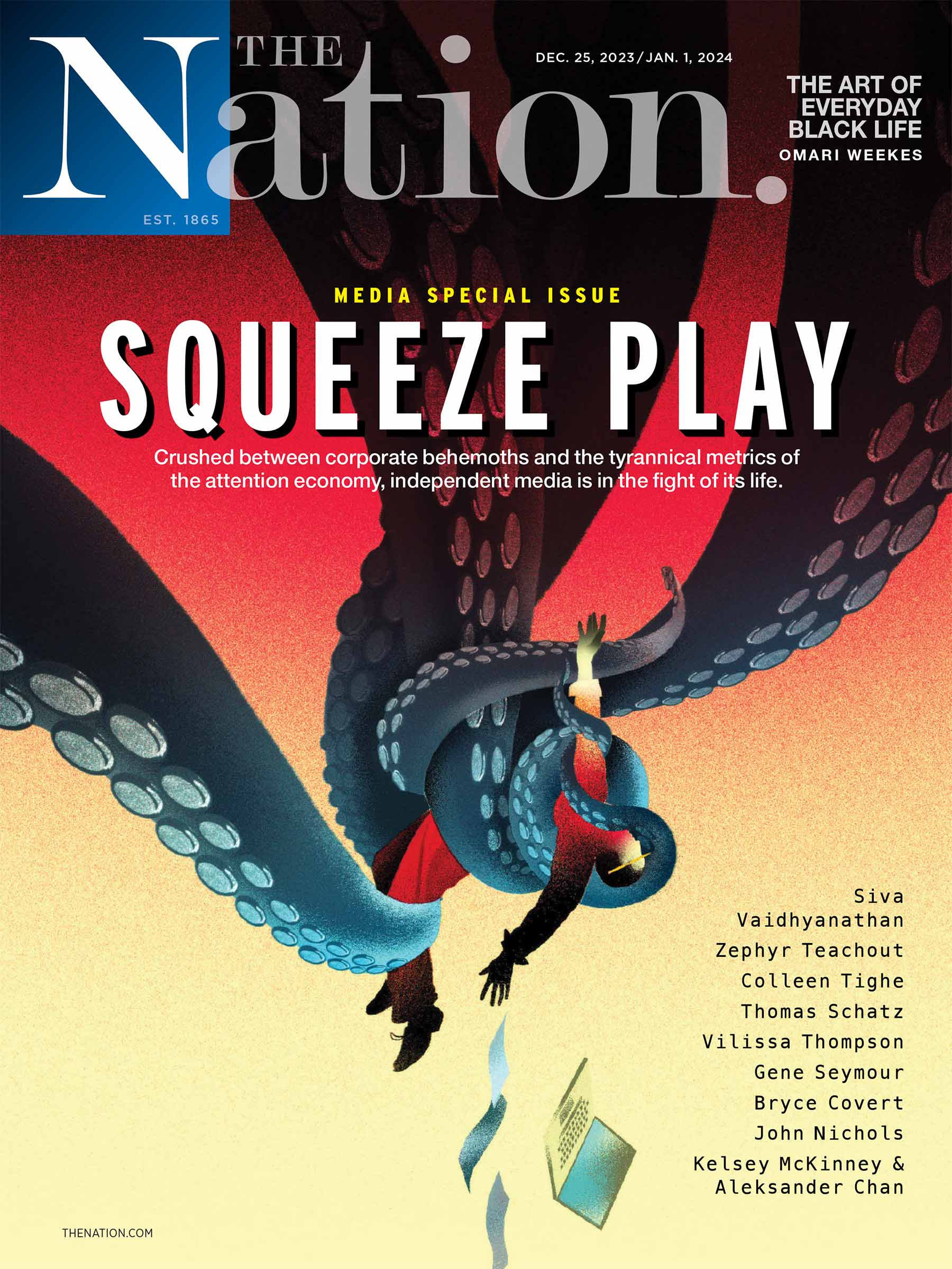 The image of Black media as “One Big Cookout” — ” ‘cookout’ being the go-to metaphor for African American consensus” — shapes an upbeat piece by Gene Seymour in a special media issue of The Nation.
The image of Black media as “One Big Cookout” — ” ‘cookout’ being the go-to metaphor for African American consensus” — shapes an upbeat piece by Gene Seymour in a special media issue of The Nation.
Seymour, in addition to being a noted journalist in his own right, is a nephew of the venerated Chuck Stone, an editor and columnist in both the Black and white press and founding president of the National Association of Black Journalists.
The “cookout” includes everything from “Black Twitter” to Black websites to the legacy Black press.
A provocative passage quoting Byron Allen, media mogul whose properties include TheGrio: “You have to have a seat at the table,” Allen says. “You have to control your image and your likeness and how you’re depicted around the world…. Media is so powerful — it can be weaponized to the point where you had people on January 6 so wound up and angry, they’re trying to overthrow a country that they already control.” But, he adds, “media can be used to unite us. Media can be used to introduce ourselves to each other.”
This columnist is quoted on the nuances involved in seeking to provide “positive news” and the need for high journalistic standards.
MSNBC Attracts Most Diverse Cable Audience
“MSNBC’s programming attracts the most diverse cable audience in America,” the network announced Dec. 13. “In 2023, MSNBC was the #1 network across all of cable among Black viewers for the 6th consecutive year and in Asian viewers. Among Hispanic viewers, MSNBC was #1 across cable news and #2 across all of cable (behind ESPN). MSNBC is home to the Top 20 highest-rated cable news programs among Black Americans. MSNBC’s “PoliticsNation with Al Sharpton” had the highest concentration of Black viewers (41%) of any program on cable news.”
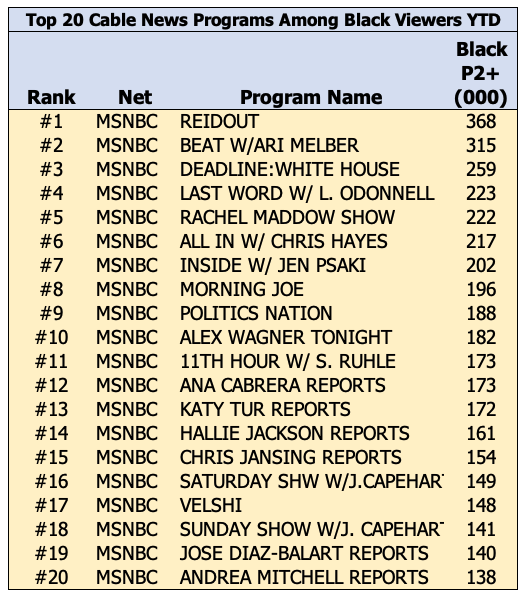

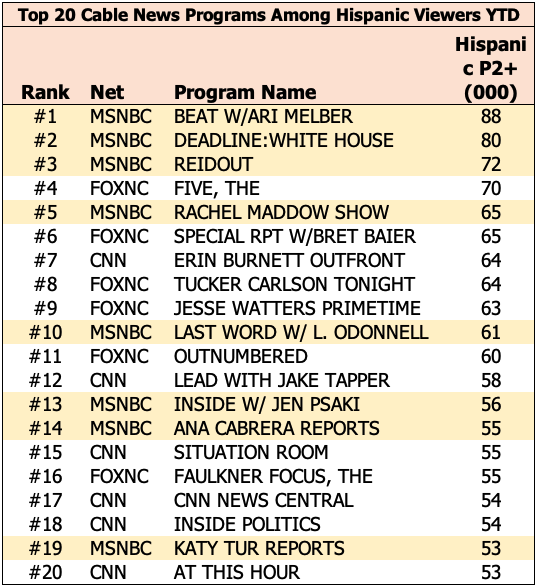
Cuba Said to Use U.S. Media to Tarnish Candidates
“The Cuban government conducted influence operations in the United States ‘aimed at denigrating specific U.S. candidates in Florida’ during the 2022 midterm elections, the U.S. intelligence community said in a report published Monday evening,” Michael Wilner reported Monday for the Miami Herald.
“The report, released by the Office of the Director of National Intelligence, said that Cuban officials worked to build relationships with members of the American media who held critical views of Havana’s critics in Congress, and that a network of social media accounts ‘almost certainly covertly tied’ to Cuba ‘amplified derogatory content’ on U.S. politicians viewed as hostile to the Cuban state.
“The declassified portion of the intelligence assessment does not name any specific individuals who were targeted, and much of the report’s section on Cuba’s activities are redacted. The assessment also does not say how effective Havana’s influence campaign was on Florida’s elections. . . . “
Bruno Rodríguez, the Cuban regime’s foreign minister, called the intelligence reports “a total fallacy.”
 Separately, “Cuban independent journalist José Luis Tan Estrada (pictured) [said] on his social networks that he was threatened and deprived of internet access for more than 24 hours by a State Security agent in Camagüey [central-eastern Cuba],” Cubanos por el mundo reported Dec. 12.
Separately, “Cuban independent journalist José Luis Tan Estrada (pictured) [said] on his social networks that he was threatened and deprived of internet access for more than 24 hours by a State Security agent in Camagüey [central-eastern Cuba],” Cubanos por el mundo reported Dec. 12.
“According to his account, it happened on Sun, Dec. 10 — International Human Rights Day, which was marked by repression in Cuba — when he was on his way to his French classes.
[…]
“It is worth noting that this is not the first time that José Luis Tan Estrada has been threatened by the Cuban regime. The Cuban journalist exposes information, both in Camagüey and the rest of the island, using social media.”
Friday on X, formerly Twitter, Mari@Regala reported that “State security has begun to repress the relatives of the political prisoners arrested in mass protests” of July 11, 2021. “They met yesterday, December 21, to support each other by not being with their loved ones who are now unjustly imprisoned as political prisoners. Some have already stopped visiting. The dictatorship imprisons your son and prohibits you from meeting other family members.”
Another tweet said, “Relatives of political prisoners speak who gathered to remind the rest of the Cubans, and the world, of the injustice on the Island.”
Meanwhile, Editor DeWayne Wickham, dean emeritus of the Morgan State University School of Global Journalism and Communication, released the winter 2023 issue of the Morgan Global Journalism Review, centered on Cuba. Headlines include “What African Americans Needs to Know About This Embattled Nation” and “My Up-Close Look at the Damage Done by the U.S. Blockade.”
A Journal-isms column summarizing a Dec. 3 Journal-isms Roundtable discussion of Cuba began, “The 60-year U.S. embargo against Cuba, a rallying point for activists who argue that the communist country is being unfairly stigmatized by the Yankees, is being used as a scapegoat by a repressive regime that persecutes independent journalists and seeks to deflect attention from its own mismanagement and incompetence, according to three independent Cuban journalists and a Cuban communications professional.”
- Diario de Cuba: Regime threatens to prosecute journalist José Luis Tan Estrada for ‘civil disobedience’ (Sept. 5)
- Julio A Rojas, Journal-isms: An Independent Afro-Cuban Journalist’s Statement to the Journal-isms Roundtable (Dec. 2)
Short Takes
- “The doubts started as soon as director Ava DuVernay optioned the critically acclaimed 2020 nonfiction bestseller ‘Caste’ for the big screen,” Geoff Edgers reported Dec. 4 for The Washington Post. “Some said that Isabel Wilkerson’s revelatory cultural history of racism was unfilmable. That Aunjanue Ellis-Taylor, cast in the central role, was not a big enough star to anchor a $38 million movie. And that multiplex audiences would shrink from a gut-wrenching drama that forces them to confront Trayvon Martin, the Holocaust, slavery and the mistreatment of the Dalits in India. But DuVernay believed her movie needed to be made. Now. Before the 2024 elections. And she wasn’t about to let money alter her vision. That meant finding a new way to finance the movie. And she did. . . .”
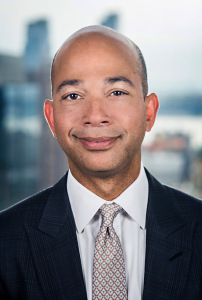 “Paramount Global is in talks to sell its Black Entertainment Television network to a management-led investor group, according to people with knowledge of the discussions,” Christopher Palmeri and Lucas Shaw reported Wednesday for Bloomberg. “The potential buyers include BET Chief Executive Officer Scott Mills (pictured) and Chinh Chu, a former Blackstone Inc. executive who runs New York-based CC Capital Partners, said the people who asked not to be identified because the negotiations are private. A price of a little under $2 billion has been discussed, the people said. . . .Byron Allen, who has also been pursuing the network, has said it should be Black-owned. Allen sent an email on Tuesday to Paramount’s management and board, reiterating an offer of $3.5 billion for both BET and VH1, another Paramount channel, according to a copy of the message reviewed by Bloomberg. . . .”
“Paramount Global is in talks to sell its Black Entertainment Television network to a management-led investor group, according to people with knowledge of the discussions,” Christopher Palmeri and Lucas Shaw reported Wednesday for Bloomberg. “The potential buyers include BET Chief Executive Officer Scott Mills (pictured) and Chinh Chu, a former Blackstone Inc. executive who runs New York-based CC Capital Partners, said the people who asked not to be identified because the negotiations are private. A price of a little under $2 billion has been discussed, the people said. . . .Byron Allen, who has also been pursuing the network, has said it should be Black-owned. Allen sent an email on Tuesday to Paramount’s management and board, reiterating an offer of $3.5 billion for both BET and VH1, another Paramount channel, according to a copy of the message reviewed by Bloomberg. . . .”
- “Of the top films and television shows on streaming platforms that included at least one Asian cast member in 2022, only 6% had an Asian character in a leading role, a new report found,” Emi Tuyetnhi Tran reported Nov. 10 for NBC News. “The study, ‘A Balancing Act for Asian Representation: More Visible But Not Yet Specific,’ released this week, found that despite strides in representation for Asian characters, the roles often overly ’emphasize proximity to whiteness.’ . . .”
- “Decades’ worth of archives of CCNMA: Latino Journalists of California — known as the oldest Latino journalist association in the United States — have been acquired by the USC Libraries,” Alejandra Molina reported Nov. 29 for the Los Angeles Times. “The organization’s records include 45 archival boxes of photos, artwork, correspondence and other documents tracing the history of CCNMA through the social events and job fairs it hosted as well as the scholarship programs it organized. Archives span from 1972, the year CCNMA was founded, through more recent activities in the 2010s. . . . “
- “Back in June, a divided U.S. Supreme Court struck down affirmative action in higher education. Now, a new CBS Reports documentary dives deep into the ripple effects of the decision, which many believe will unravel decades of progress. Independent journalist Soledad O’Brien joins us with more,” CBS reporters intone.
 David Ono (pictured) , co-anchor for KABC Los Angeles Eyewitness News at 4 and 6 p.m., is Broadcasting + Cable’s 2023 pick for News Anchor of the Year, the publication announced Tuesday. Ono “stepped past his anchor desk this year, touring his own multimedia production about the Japanese-American Nisei soldiers during World War II. Defining Courage: Celebrate the Legacy of True American Heroes, which has sold out more than a dozen shows, features live music (with lyrics by Ono), historic film footage and eyewitness interviews. . . .”
David Ono (pictured) , co-anchor for KABC Los Angeles Eyewitness News at 4 and 6 p.m., is Broadcasting + Cable’s 2023 pick for News Anchor of the Year, the publication announced Tuesday. Ono “stepped past his anchor desk this year, touring his own multimedia production about the Japanese-American Nisei soldiers during World War II. Defining Courage: Celebrate the Legacy of True American Heroes, which has sold out more than a dozen shows, features live music (with lyrics by Ono), historic film footage and eyewitness interviews. . . .”
- “Lawyers for Ozy Media, the defunct media and entertainment company founded by Carlos Watson, allege in a new lawsuit that Ben Smith, BuzzFeed and Semafor (the media startup co-founded by Smith in 2022) misappropriated Ozy’s trade secrets ‘for their own benefit,’ ” Todd Spangler reported Thursday for Variety. “The suit additionally alleges that BuzzFeed breached a nondisclosure agreement it entered into with Ozy in 2019 as part of its efforts to buy the company. Lawyers representing Ozy Media allege that Smith, former BuzzFeed News editor-in-chief and New York Times media columnist who is currently editor-in-chief of Semafor, wrote ‘a series of hit pieces’ about Ozy Media but that he did not disclose ‘his central role in BuzzFeed’s efforts to buy Ozy two years earlier’ while he was at BuzzFeed. . . .”
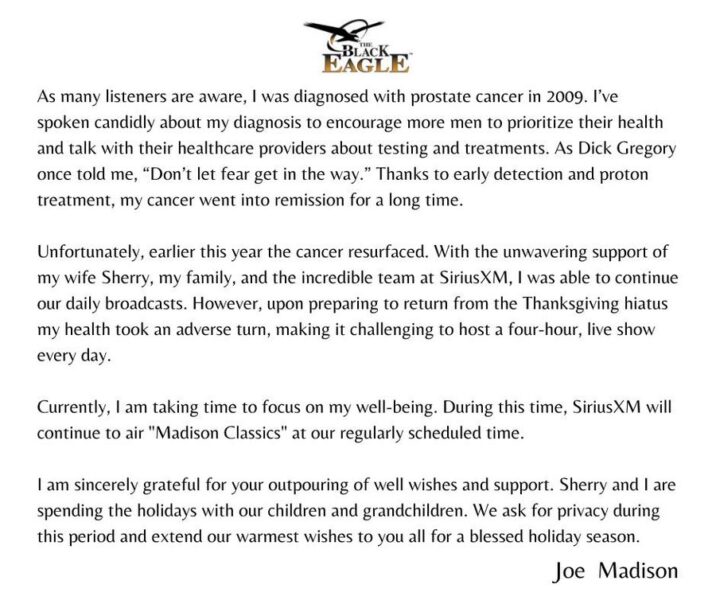
- Joe Madison is taking a break from his Sirius XM show because of resurgence of prostate cancer, he announced (above) on X, formerly Twitter.
- And in New York:
View this post on Instagram
 Our police reporters, experts in the ways of the NYPD, know the ins and outs of the huge agency so well in part due to the fact that they are sitting right in the middle of the place: in dingy offices on 1 Police Plaza’s second floor, known as the Shack,” the Daily News in New York editorialized Dec. 17. “But after 50 years in the Shack, from the moment the new HQ opened on Oct. 16, 1973, in the waning weeks of the John Lindsay mayoralty, the cops are showing the press the door. Yesterday, a department flack confirmed the exiling of the reporters to a trailer outside the building. It’s a terrible move to move out the watchers who report back to 8 million New Yorkers on the doings, good and bad, of the public’s police department. Yes, that is right. This is not Commissioner Eddie Caban’s, or even Mayor [Eric] Adams’ NYPD. The agency belongs to the people who pay for it, from the salaries, benefits and pensions of every person to the police cars and the guns, entrusting it and its officers to enforce the laws of this city. . . .”
Our police reporters, experts in the ways of the NYPD, know the ins and outs of the huge agency so well in part due to the fact that they are sitting right in the middle of the place: in dingy offices on 1 Police Plaza’s second floor, known as the Shack,” the Daily News in New York editorialized Dec. 17. “But after 50 years in the Shack, from the moment the new HQ opened on Oct. 16, 1973, in the waning weeks of the John Lindsay mayoralty, the cops are showing the press the door. Yesterday, a department flack confirmed the exiling of the reporters to a trailer outside the building. It’s a terrible move to move out the watchers who report back to 8 million New Yorkers on the doings, good and bad, of the public’s police department. Yes, that is right. This is not Commissioner Eddie Caban’s, or even Mayor [Eric] Adams’ NYPD. The agency belongs to the people who pay for it, from the salaries, benefits and pensions of every person to the police cars and the guns, entrusting it and its officers to enforce the laws of this city. . . .”
- The Poynter Institute “and The Just Trust, one of the largest dedicated criminal justice reform funders in the country, are pleased to announce a $250,000 grant to expand Poynter’s groundbreaking training program designed to transform crime reporting in the United States into public safety journalism. The grant will support hundreds of reporters, producers, and editors from 25 newsrooms and news networks across the country in reimagining their coverage,” Poynter announced Tuesday.
- “Between 2010 and 2022, arbitrators reinstated three out of every four [New York state prison] guards fired for abuse or covering it up, according to a review by The Marshall Project of 136 cases. The decisions the outside arbitrators wrote heavily favored prison guards, even in the face of strong evidence against them,” Alysia Santo and Joseph Neff reported Dec. 14 for the Marshall Project, in conjunction with the Albany Times-Union and New York Focus. “Former New York state corrections Commissioner Brian Fischer said arbitration is ‘a crazy system’ that doesn’t benefit the public. ‘The employee should be terminated, the inmate should not be abused,’ he said. ‘And yet we let it go on and on.’ . . . ”
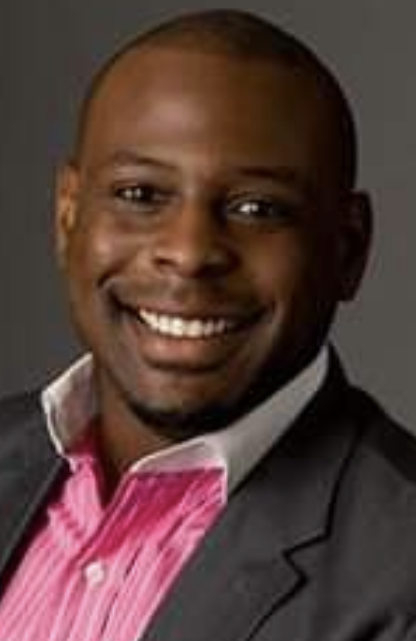 “GBH News, the fastest-growing local newsroom in the region, today announced the creation of an ambitious new multiplatform unit that will focus on racial and socioeconomic equity issues in Greater Boston and beyond,” Boston’s WGBH said Monday. “The Equity and Justice unit will develop regional and national interest stories around these key topics, expanding its commitment to community events, engaging directly with the audience, and elevating community voices using the GBH News platform. . . . GBH News Executive Editor Lee Hill (pictured) will oversee the unit . . . This focus on community has already yielded notable successes. A limited-run broadcast of Spanish-language show Salud increased listenership among Hispanic audiences on 89.7FM.”
“GBH News, the fastest-growing local newsroom in the region, today announced the creation of an ambitious new multiplatform unit that will focus on racial and socioeconomic equity issues in Greater Boston and beyond,” Boston’s WGBH said Monday. “The Equity and Justice unit will develop regional and national interest stories around these key topics, expanding its commitment to community events, engaging directly with the audience, and elevating community voices using the GBH News platform. . . . GBH News Executive Editor Lee Hill (pictured) will oversee the unit . . . This focus on community has already yielded notable successes. A limited-run broadcast of Spanish-language show Salud increased listenership among Hispanic audiences on 89.7FM.”
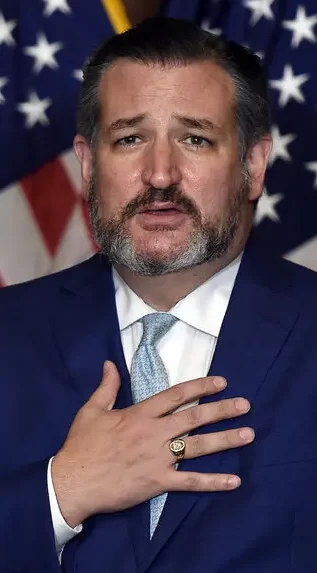 In a letter sent Friday to Patricia Harrison, president of the Corporation for Public Broadcasting, “Sen. Ted Cruz (R-Texas) (pictured) questioned the constitutionality of the corporation’s revised Community Service Grant diversity requirements,” Tyler Falk reported Dec. 12 for Current. “In October, CPB’s board agreed to scale back diversity requirements for its CSG program, instead requiring grant recipients to adopt a ‘Community Representation Statement’ detailing plans and goals for representing their community. These statements must be posted on stations’ websites or made available at their offices. The policy does not require grantees to detail specific measures they take to reflect community diversity. . . .”
In a letter sent Friday to Patricia Harrison, president of the Corporation for Public Broadcasting, “Sen. Ted Cruz (R-Texas) (pictured) questioned the constitutionality of the corporation’s revised Community Service Grant diversity requirements,” Tyler Falk reported Dec. 12 for Current. “In October, CPB’s board agreed to scale back diversity requirements for its CSG program, instead requiring grant recipients to adopt a ‘Community Representation Statement’ detailing plans and goals for representing their community. These statements must be posted on stations’ websites or made available at their offices. The policy does not require grantees to detail specific measures they take to reflect community diversity. . . .”
- “Today’s unprecedented moment for women of color who’ve become key leaders in traditional and online media signals what many hope is a cultural shift in America’s newsrooms,” the Women’s Media Center reported Dec. 11. “This Women’s Media Center’s’ ‘Women of Color in U.S. News Leadership 2023’ report spotlights 20 of these dynamic leaders and their strategies for creating more inclusive newsrooms and expanding definitions of what constitutes news — and, as a result, attracting new audiences whose trials and triumphs, concerns and curiosities increasingly are a part of the 24/7 news cycle. . . . Having women of color in these critical, decision-making, shot-caller positions does much to show others that ‘if you can see it, you can be it.’ ”
 The Asian American Journalists Association said Dec. 11 it has commissioned a research project to capture the experiences of journalists of color in their newsrooms. “Your contribution will be greatly appreciated, and all responses will be kept confidential. Please click on the link . . . to take this short survey, and feel free to pass this survey along to any others in your network.”
The Asian American Journalists Association said Dec. 11 it has commissioned a research project to capture the experiences of journalists of color in their newsrooms. “Your contribution will be greatly appreciated, and all responses will be kept confidential. Please click on the link . . . to take this short survey, and feel free to pass this survey along to any others in your network.”
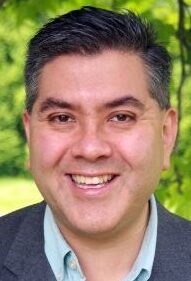 “Today marks my last day at KLCC,” the public radio station in Eugene, Ore., as its full-time, senior reporter, Brian Bull (pictured) wrote Dec. 15 on Facebook. “After nearly 7.5 years, I’m putting the microphone aside and cozying up to a lectern. This also wraps up 27 years of working in public media, exactly half of my life has been spent covering stories all across the upper Midwest and Pacific region. These ranged from hard-hitting stories about homelessness, domestic violence, suicide, disasters, and missing and murdered Indigenous people, to lighter ones about the Jingle Dress Project, the last Blockbuster Video on Earth, and mashed potato wrestling. I’ve also earned some great accolades, including four national Edward R. Murrow Awards, Best Radio Reporter from the Native American Journalists Association and Ohio Associated Press . . . .”
“Today marks my last day at KLCC,” the public radio station in Eugene, Ore., as its full-time, senior reporter, Brian Bull (pictured) wrote Dec. 15 on Facebook. “After nearly 7.5 years, I’m putting the microphone aside and cozying up to a lectern. This also wraps up 27 years of working in public media, exactly half of my life has been spent covering stories all across the upper Midwest and Pacific region. These ranged from hard-hitting stories about homelessness, domestic violence, suicide, disasters, and missing and murdered Indigenous people, to lighter ones about the Jingle Dress Project, the last Blockbuster Video on Earth, and mashed potato wrestling. I’ve also earned some great accolades, including four national Edward R. Murrow Awards, Best Radio Reporter from the Native American Journalists Association and Ohio Associated Press . . . .”
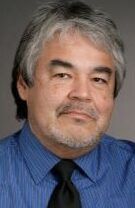 “I know you’ve heard this before: But I’m leaving journalism — as a job,” Tommy Cummings (pictured) wrote on LinkedIn. “This time, for real. I applied and I was accepted for the voluntary buyout at The Dallas Morning News. I’ll take a little R&R then focus on writing a book based on my incredible dad.” Cummings grew up Muskogee Creek. “My last day is Jan. 1. “For the past 18 months at The News, I was able to live a dream, writing about arts and entertainment in the D-FW market. I was able to interview famous and not-so-famous people and have access to so much. My four-decade career has been mostly as a behind-the-scenes print or digital editor, which made me invisible to public view. At San Francisco, Fort Worth and the first 11 years at the DMN, I wrote occasional articles, just not on a full-time basis. But I took on full-time reporting for the first time in 41 years — and put myself out there for millions of readers. Whew, I really grew an appreciation for reporters. . . .”
“I know you’ve heard this before: But I’m leaving journalism — as a job,” Tommy Cummings (pictured) wrote on LinkedIn. “This time, for real. I applied and I was accepted for the voluntary buyout at The Dallas Morning News. I’ll take a little R&R then focus on writing a book based on my incredible dad.” Cummings grew up Muskogee Creek. “My last day is Jan. 1. “For the past 18 months at The News, I was able to live a dream, writing about arts and entertainment in the D-FW market. I was able to interview famous and not-so-famous people and have access to so much. My four-decade career has been mostly as a behind-the-scenes print or digital editor, which made me invisible to public view. At San Francisco, Fort Worth and the first 11 years at the DMN, I wrote occasional articles, just not on a full-time basis. But I took on full-time reporting for the first time in 41 years — and put myself out there for millions of readers. Whew, I really grew an appreciation for reporters. . . .”
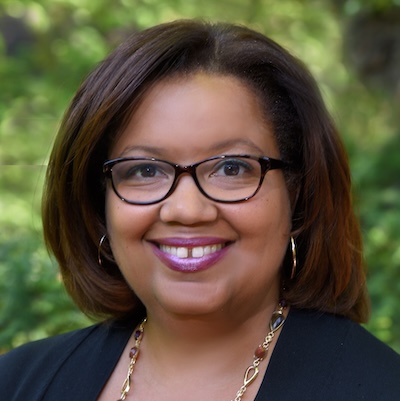 Asked to offer predictions for 2024 for Nieman Lab, Lynette Clemetson, director of Wallace House Center for Journalists at the University of Michigan (pictured), joined other journalism educators and fellowship leaders in writing, “One of the biggest growth areas for journalism in the coming year is one that none of us would wish for — the journalism of the displaced.” She added, “Around the globe, once emerging democracies have been backsliding. The past several years have seen a surge in exiled journalists from places including Russia, Afghanistan, Hong Kong, Sudan, Haiti, and Nicaragua, mostly to Europe and North America. With 40 national elections in countries including Taiwan, India, Indonesia, South Africa, and the United States, 2024 is a consequential year. Add the devastating instability of ongoing conflicts in Ukraine, Gaza, and Sudan, and needed support for international journalists will easily outstrip our current resources. We must be poised to step in, because the journalists who need help are critical to shedding light on these crises. . . .”
Asked to offer predictions for 2024 for Nieman Lab, Lynette Clemetson, director of Wallace House Center for Journalists at the University of Michigan (pictured), joined other journalism educators and fellowship leaders in writing, “One of the biggest growth areas for journalism in the coming year is one that none of us would wish for — the journalism of the displaced.” She added, “Around the globe, once emerging democracies have been backsliding. The past several years have seen a surge in exiled journalists from places including Russia, Afghanistan, Hong Kong, Sudan, Haiti, and Nicaragua, mostly to Europe and North America. With 40 national elections in countries including Taiwan, India, Indonesia, South Africa, and the United States, 2024 is a consequential year. Add the devastating instability of ongoing conflicts in Ukraine, Gaza, and Sudan, and needed support for international journalists will easily outstrip our current resources. We must be poised to step in, because the journalists who need help are critical to shedding light on these crises. . . .”
To subscribe at no cost, please send an email to journal-isms+subscribe@groups.io and say who you are.
Facebook users: “Like” “Richard Prince’s Journal-isms” on Facebook.
Follow Richard Prince on Twitter @princeeditor
Richard Prince’s Journal-isms originates from Washington. It began in print before most of us knew what the internet was, and it would like to be referred to as a “column.” Any views expressed in the column are those of the person or organization quoted and not those of any other entity. Send tips, comments and concerns to Richard Prince at journal-isms+owner@
View previous columns (after Feb. 13, 2016).
View previous columns (before Feb. 13, 2016)
- Diversity’s Greatest Hits, 2018 (Jan. 4, 2019)
- Book Notes: Is Taking a Knee Really All That? (Dec. 20, 2018)
- Book Notes: Challenging ’45’ and Proudly Telling the Story (Dec. 18, 2018)
- Book Notes: Get Down With the Legends! (Dec. 11, 2018)
- Journalist Richard Prince w/Joe Madison (Sirius XM, April 18, 2018) (podcast)
- Richard Prince (journalist) (Wikipedia entry)
- February 2018 Podcast: Richard “Dick” Prince on the need for newsroom diversity (Gabriel Greschler, Student Press Law Center, Feb. 26, 2018)
- Diversity’s Greatest Hits, 2017 — Where Will They Take Us in the Year Ahead?
- Book Notes: Best Sellers, Uncovered Treasures, Overlooked History (Dec. 19, 2017)
- An advocate for diversity in the media is still pressing for representation, (Courtland Milloy, Washington Post, Nov. 28, 2017)
- Morgan Global Journalism Review: Journal-isms Journeys On (Aug. 31, 2017)
- Diversity’s Greatest Hits, 2016
- Book Notes: 16 Writers Dish About ‘Chelle,’ the First Lady
- Book Notes: From Coretta to Barack, and in Search of the Godfather
- Journal-isms’ Richard Prince Wants Your Ideas (FishbowlDC, Feb. 26, 2016)
- “JOURNAL-ISMS” IS LATEST TO BEAR BRUNT OF INDUSTRY’S ECONOMIC WOES (Feb. 19, 2016)
- Richard Prince with Charlayne Hunter-Gault, “PBS NewsHour,” “What stagnant diversity means for America’s newsrooms” (Dec. 15, 2015)
- Book Notes: Journalists Follow Their Passions
- Book Notes: Journalists Who Rocked Their World
- Book Notes: Hands Up! Read This!
- Book Notes: New Cosby Bio Looks Like a Best-Seller
- Journo-diversity advocate turns attention to Ezra Klein project (Erik Wemple, Washington Post, March 5, 2014)

